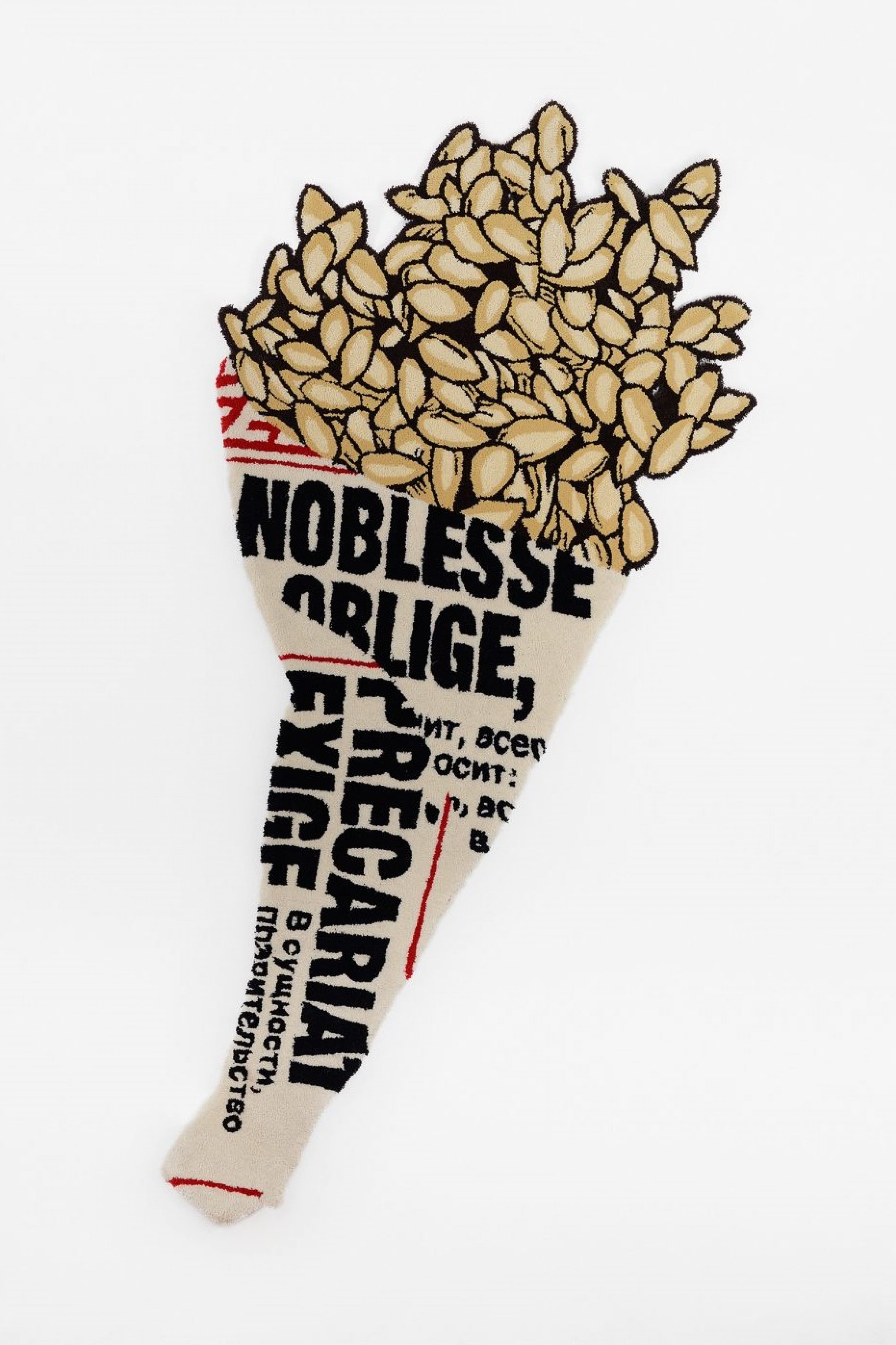Slavs and Tatars
Noblesse Oblige
FSP ING 0236
Roast grains wrapped in a paper tube are a popular snack in the Middle East and in parts of Eastern Europe and Central Asia. Depending on the region, pumpkin seeds, sunflower seeds or pistachios are eaten—locally grown, cheap and readily available. They are sold on the street in “recycled” packaging made of rolled-up newspaper. The artists scale up this modest tube to a wool carpet over two metres long. In Slavs and Tatars’ approach, the street snack becomes an international symbol of the working class—the precariat that replaced the 20th-century proletariat. The newspaper has inscriptions in Latin and Cyrillic alphabets. The headline in French reads: “Noblesse oblige, précariat exige”—nobility obliges, the precariat demands.
Slavs and Tatars
Slavs and Tatars is an international artistic collective founded by Kasia Korczak and Payam Sharifi. Their interests centre around the geographic area “east of the former Berlin Wall and west of the Great Wall of China,” with its mix of cultures, languages and religions. The interdisciplinary practice of Slavs and Tatars is based on thorough research into ideologies and philosophical and linguistic systems. They work in thematic cycles which they present in the form of exhibitions, books, and performative lectures. They break through the weight of the topics they raise through a sense of humour, conveyed by language (more specifically a muddle of languages) and a peculiar combination of serious content with light-hearted form. The objects and installations created by Slavs and Tatars are executed in traditional craft techniques using fine materials, as well as machine made using mass-produced means. This concern for form expresses a critical reflection on issues of globalization and homogenization of culture. Slavs and Tatars refer to what they do as “the archaeology of everyday life.”
Slavs and Tatars is an international artistic collective founded by Kasia Korczak and Payam Sharifi. Their interests centre around the geographic area “east of the former Berlin Wall and west of the Great Wall of China,” with its mix of cultures, languages and religions. The interdisciplinary practice of Slavs and Tatars is based on thorough research into ideologies and philosophical and linguistic systems. They work in thematic cycles which they present in the form of exhibitions, books, and performative lectures. They break through the weight of the topics they raise through a sense of humour, conveyed by language (more specifically a muddle of languages) and a peculiar combination of serious content with light-hearted form. The objects and installations created by Slavs and Tatars are executed in traditional craft techniques using fine materials, as well as machine made using mass-produced means. This concern for form expresses a critical reflection on issues of globalization and homogenization of culture. Slavs and Tatars refer to what they do as “the archaeology of everyday life.”
